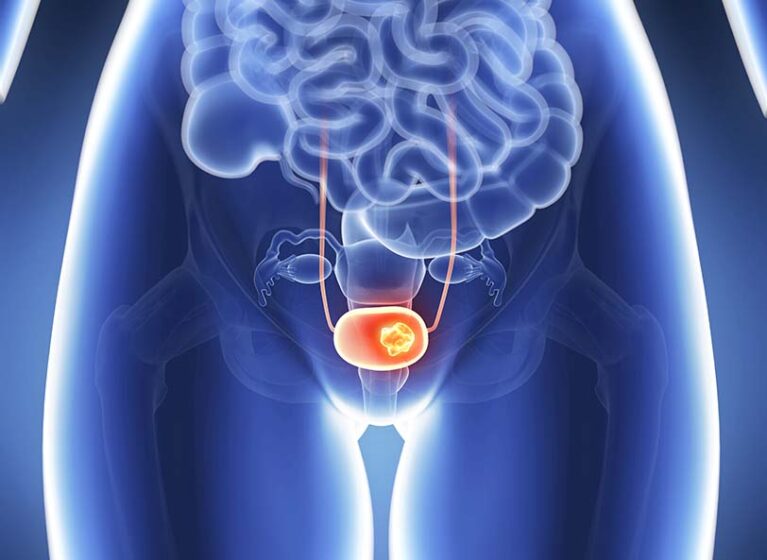
Non-muscle invasive bladder cancer (NMIBC) accounts for about 70% of bladder cancers and has a notably high recurrence rate. Because existing treatments often stop working or don’t work at all, there’s a great need for new effective options — especially for cancers at high risk of progressing to muscle-invasive disease.
The FDA recently approved the first gene therapy for high-risk NMIBC — intravesical nadofaragene firadenovec. This new treatment represents a key step forward in managing NMIBC.
UVA Health urologic oncologist Tracey Krupski, MD, principal investigator for the therapy’s phase II and III clinical trials, calls it “transformative.”
“With its convenience, minimal side effects, and promising results, it provides hope for patients facing recurring bladder cancer without resorting to more invasive procedures,” Krupski explains.
Growing Need for Effective Treatments for NMIBC
NMIBC is typically first treated with chemotherapy. Bacillus Calmette-Guerin (BCG), an immune therapy, has also been a long-standing treatment.
“There’s been an evolving shortage of BCG over the last 3-5 years,” Krupski explains. “It’s becoming more acute.”
Also, many patients don’t respond to BCG. In those cases, IV pembrolizumab is an option. But it requires infusions every 3 weeks and can cause pneumonitis, arthritis, and colitis.
“This is where the new gene therapy comes in,” Krupski says.
Fewer Side Effects, Less Frequent Treatment Needed
Nadofaragene firadenovec offers another option for patients with high-risk NMIBC that isn’t responsive to BCG.
It only needs to be administered every three months, making it much more accessible for patients.
“For patients coming from four or five hours away, every three weeks or six weeks is a lot for a family,” Krupski shares.
The gene therapy is localized to the bladder, so side effects are typically milder and go away within a few days. Side effects include increased urgency and a burning sensation during urination.
“It’s a step forward in convenience and patient comfort,” says Krupski.
Delaying Recurrence & Slowing Progression
In trials, nadofaragene firadenovec showed a 40% response rate.
“That’s a promising result,” Krupski says. “While it's not a cure, it offers hope for long-term management without invasive surgeries.”
Of people who received at least one dose, most did not progress to muscle-invasive disease in five years, even if their cancer didn’t go away completely.
Increasing Availability of Nadofaragene Firadenovec
Nadofaragene firadenovec is currently available at about 30-40 cancer centers in the U.S. as part of a phase 4 registry.
Once makers of the therapy can overcome manufacturing limitations, it should become more available.
“We're optimistic about its potential to become more widely available as production increases,” Krupski says. “It offers a more user-friendly option for patients who struggle with frequent hospital visits and want to avoid major surgeries.”